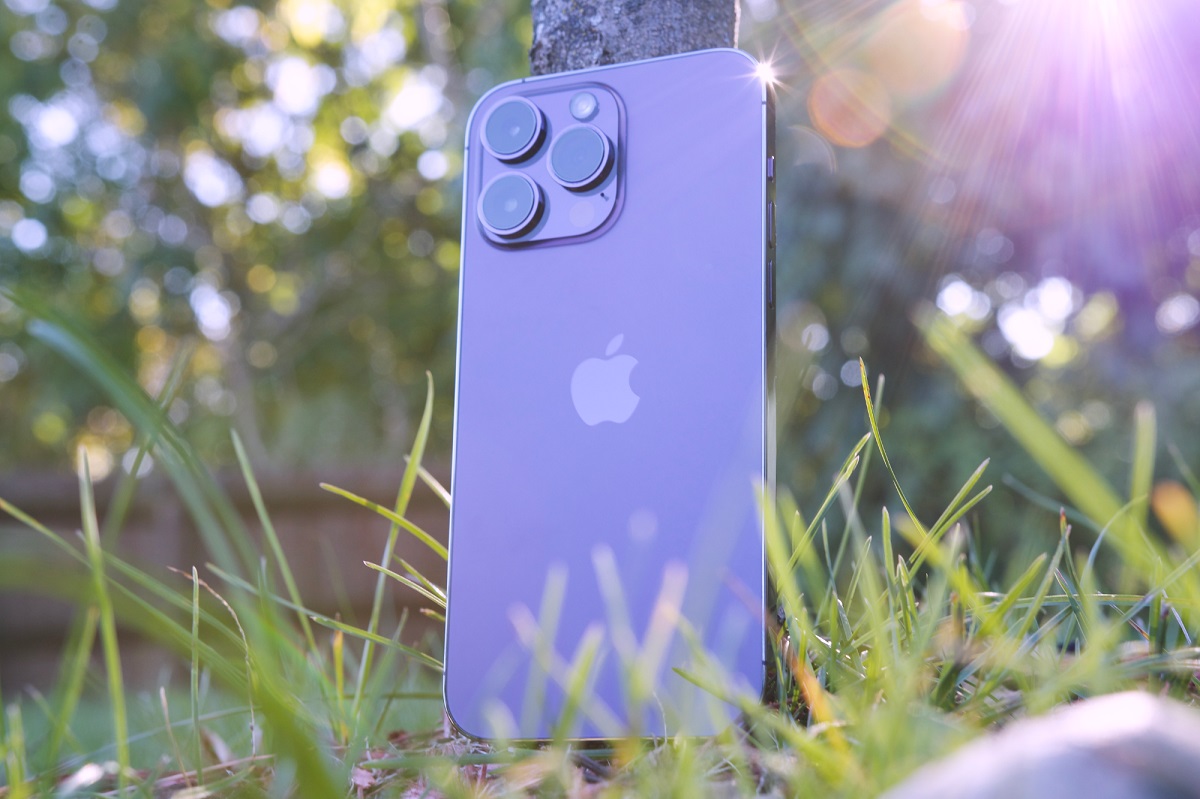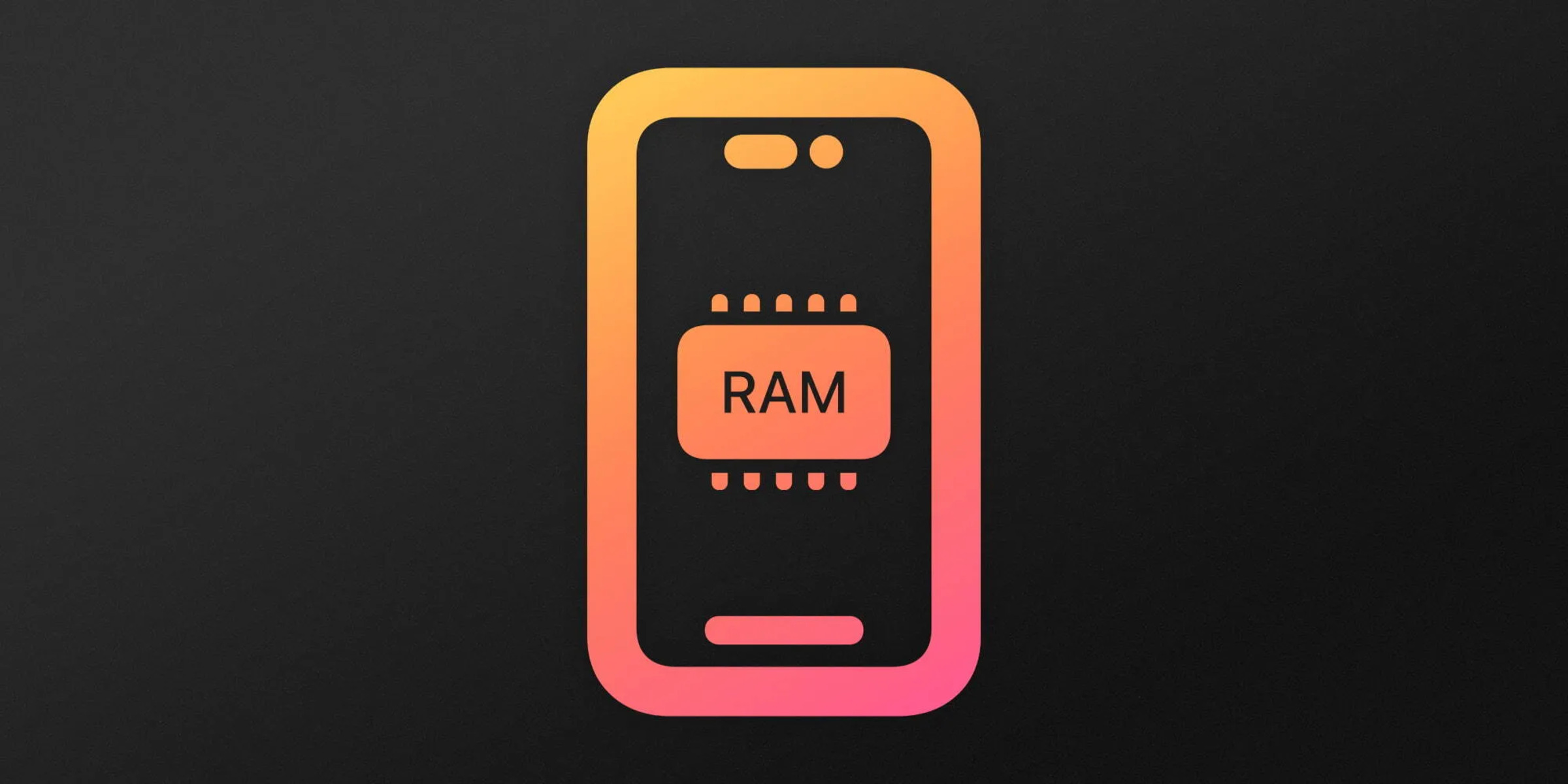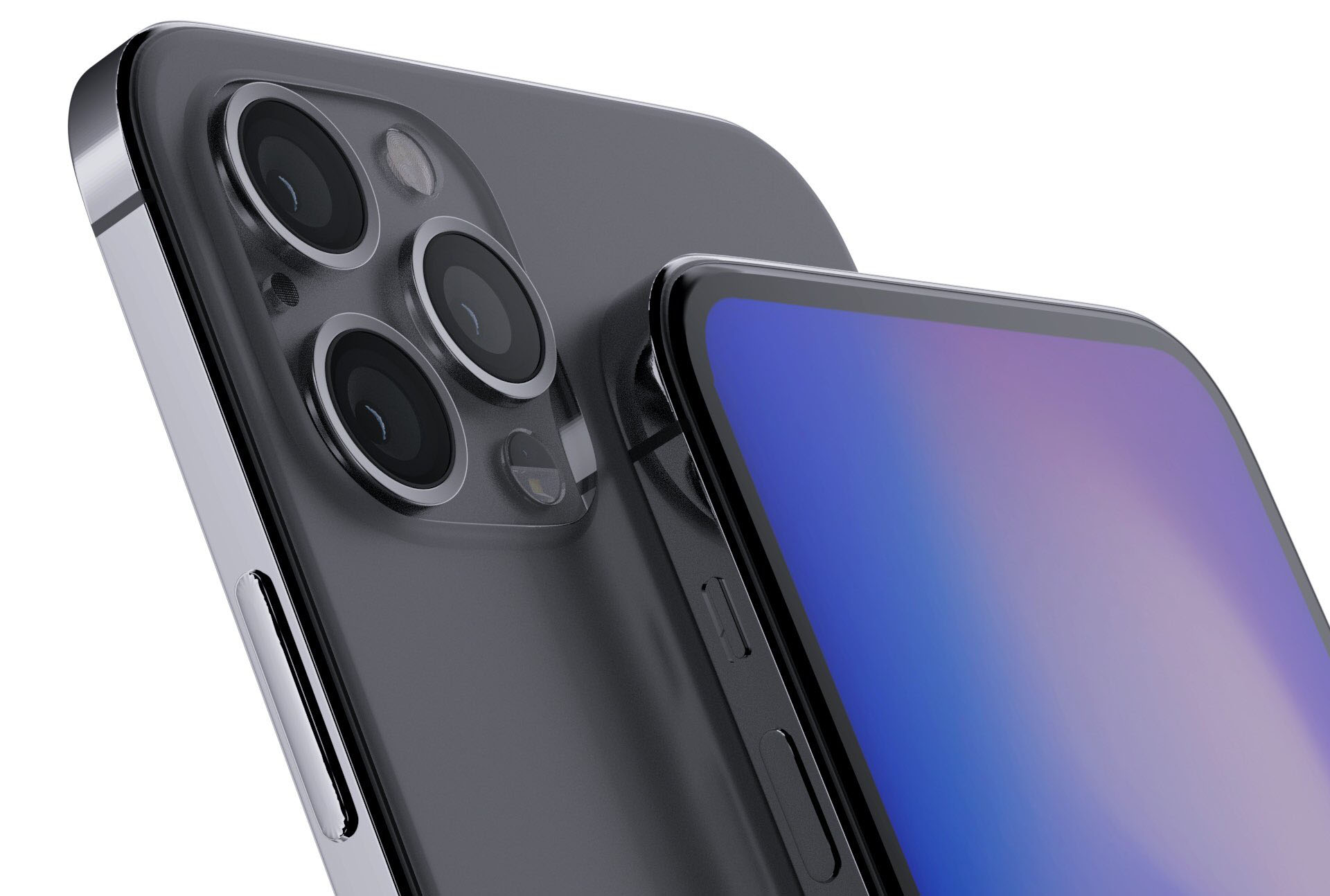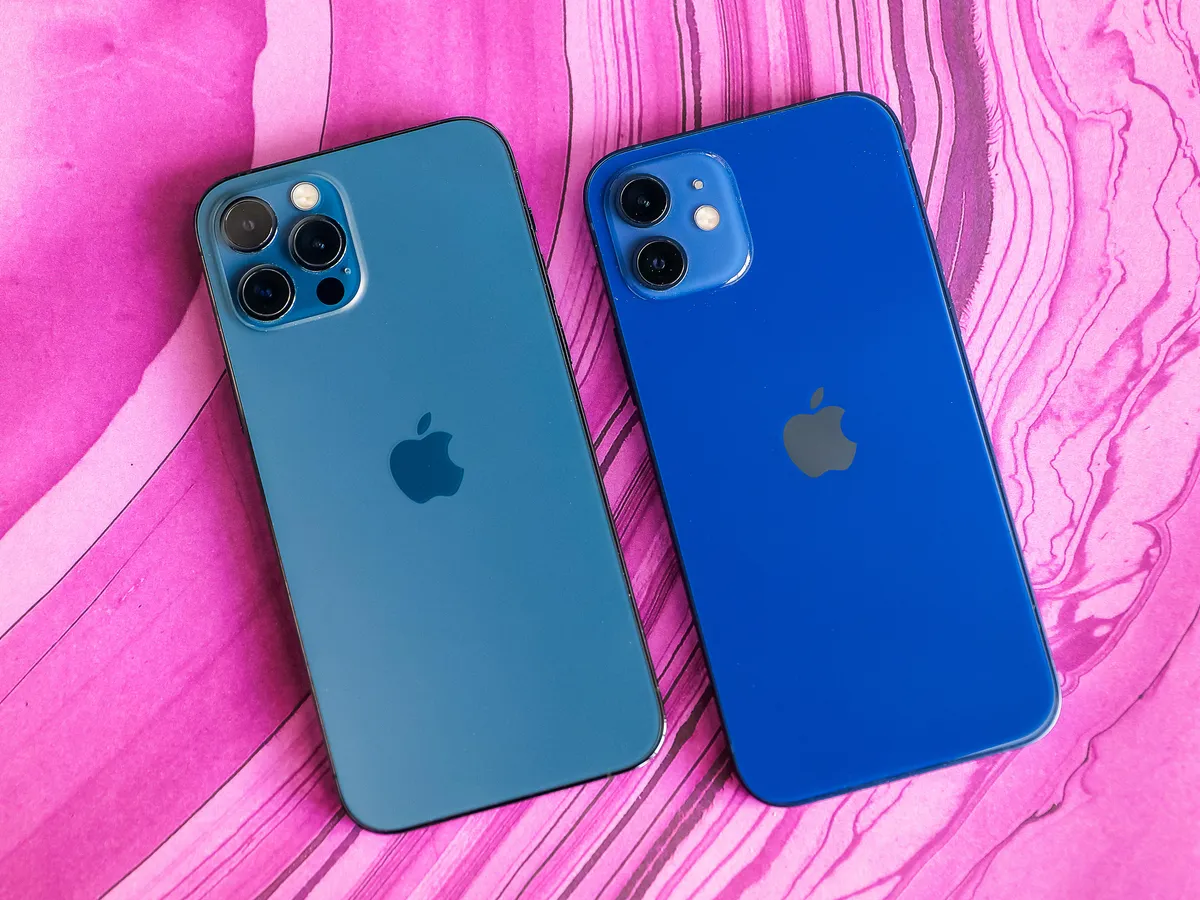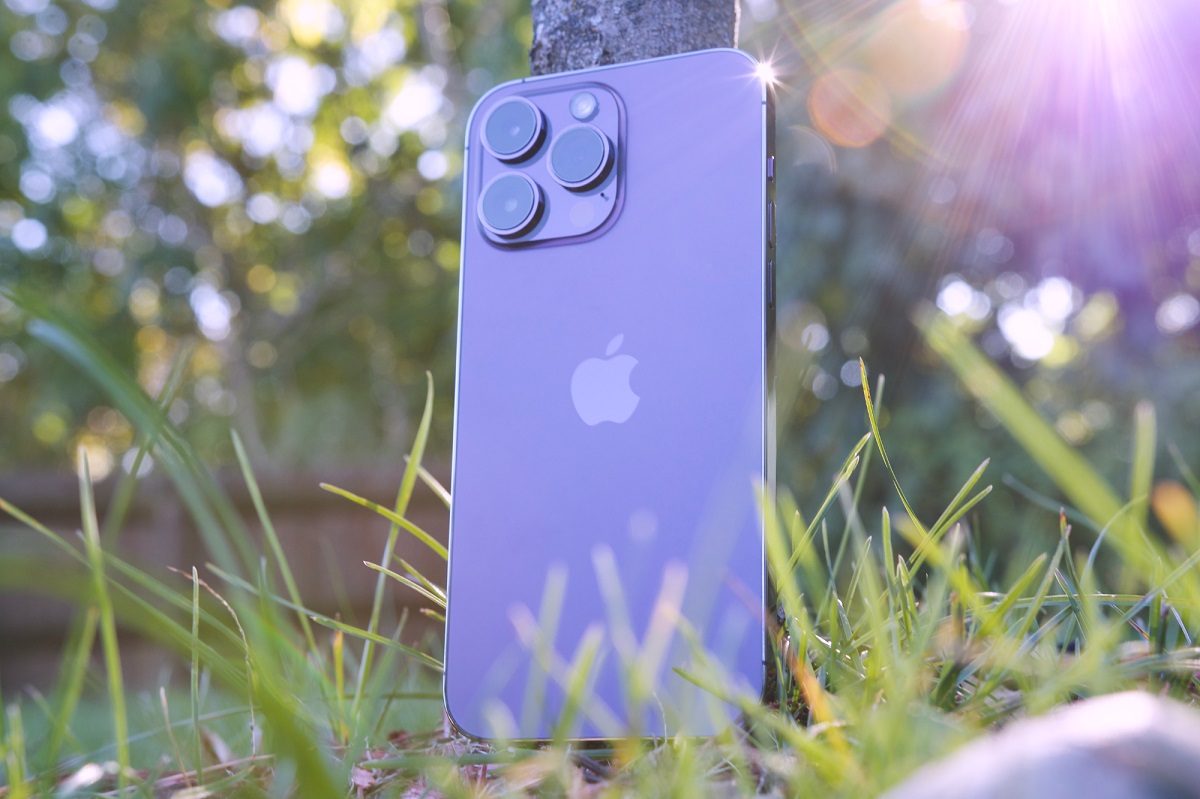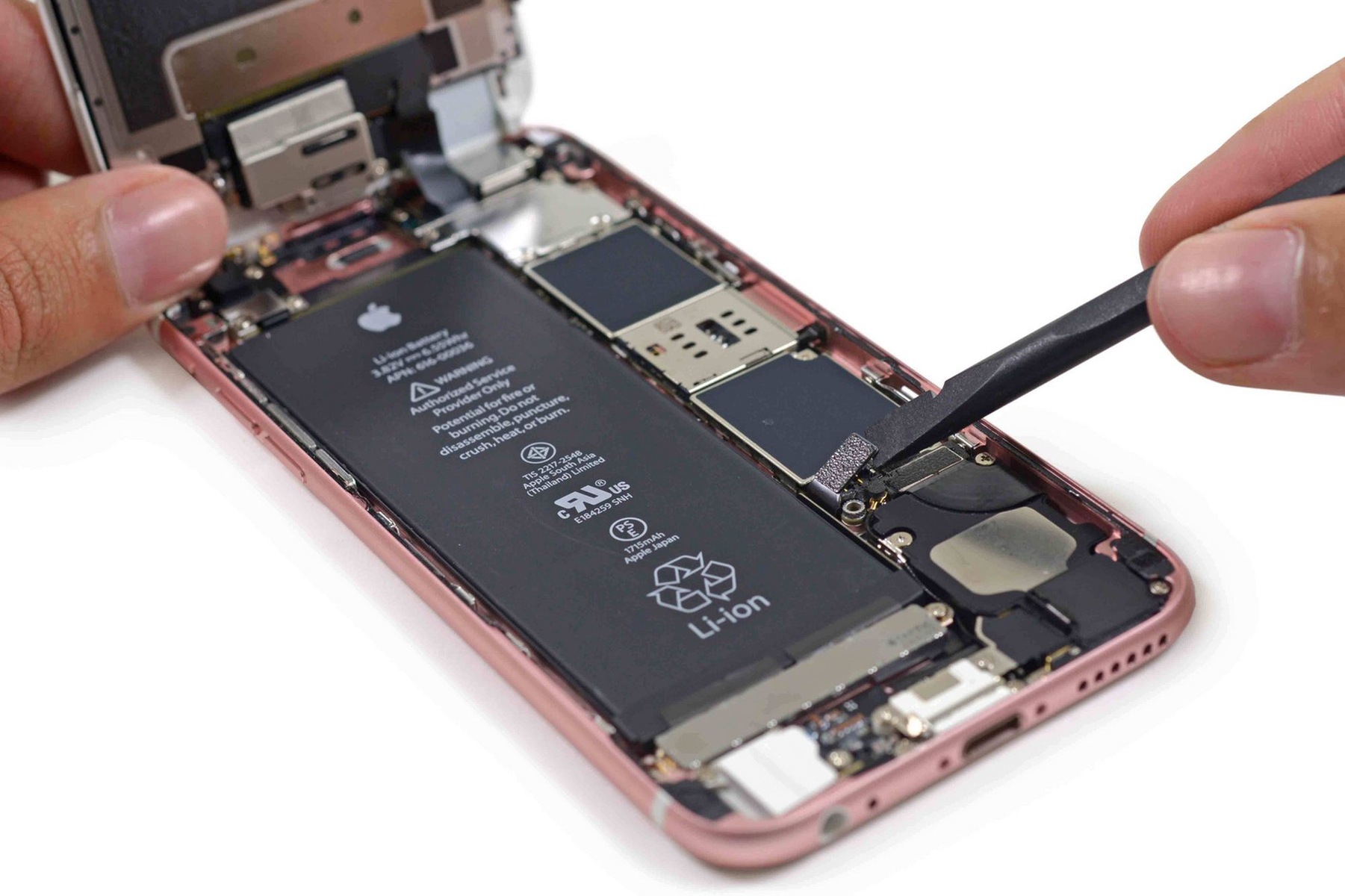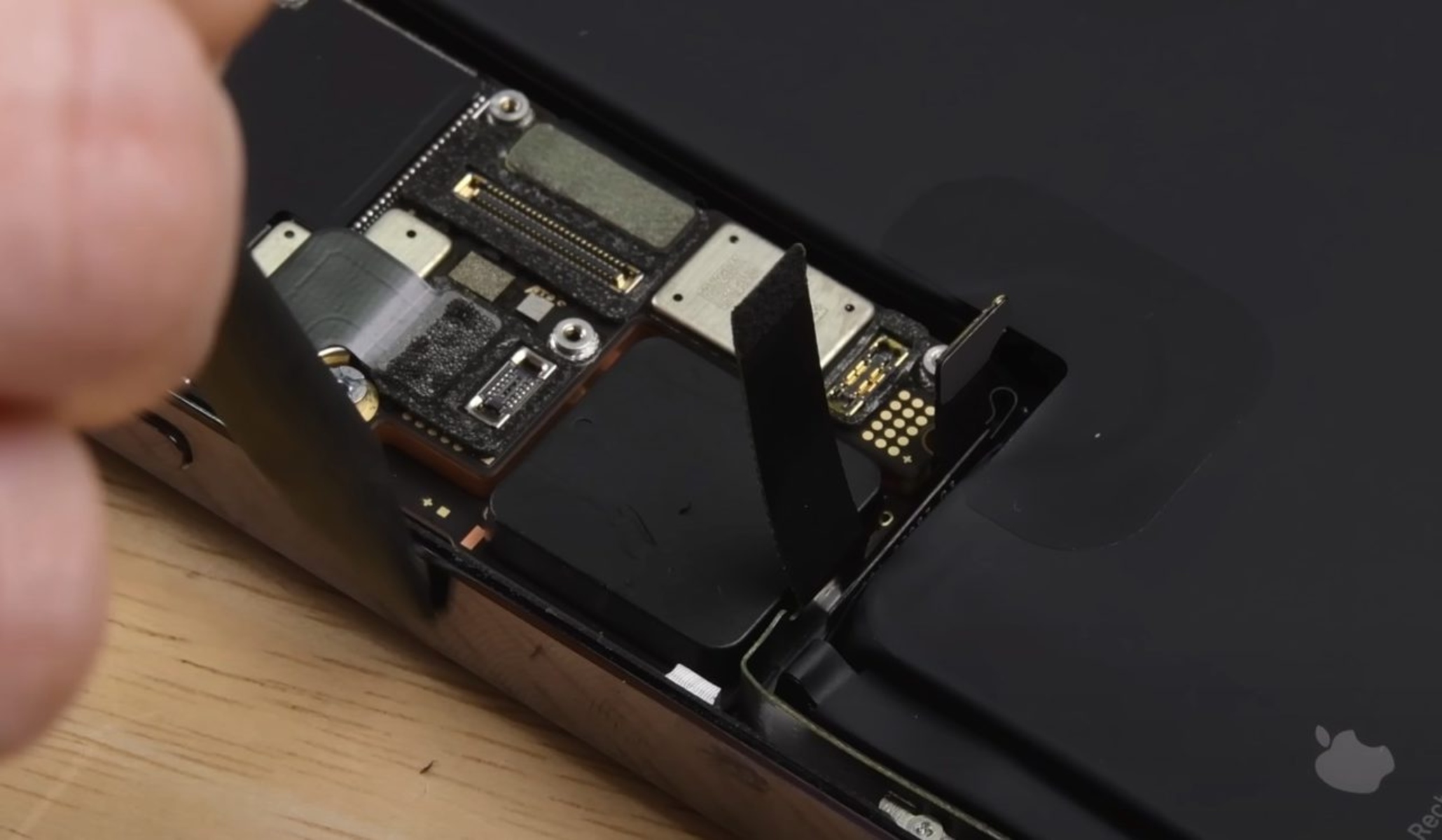Introduction
The iPhone has become one of the most popular smartphones in the world, known for its sleek design, advanced features, and seamless user experience. One crucial component that plays a significant role in the performance of the iPhone is its Random Access Memory (RAM). RAM is responsible for storing and accessing data that is actively used by the device’s operating system and running applications.
In this article, we will explore the RAM capacity of the highly anticipated iPhone 14. As technology continues to evolve, consumers are eagerly awaiting the release of new models that promise even more powerful performance and enhanced capabilities. With rumors and speculations circulating, one burning question on the minds of iPhone enthusiasts is: how much RAM will be packed into the iPhone 14?
Before we delve into the RAM capacity of the upcoming iPhone 14, let’s first understand the importance of RAM in smartphones and its impact on device performance.
The Importance of RAM in Smartphones
RAM serves as the temporary working space for your device, allowing it to quickly access and process data. When you open an app or perform a task on your iPhone, the necessary data is loaded into RAM, allowing for seamless multitasking and smooth operation. Having an adequate amount of RAM is crucial for preventing lag, stuttering, and app crashes.
In addition, RAM plays a crucial role in enabling the device to handle resource-intensive applications, such as graphic-intensive games and video editing software. More RAM allows for smoother and faster performance when dealing with large files and complex tasks.
Previous Models: How Much RAM Was in iPhone 13?
With the release of each new iPhone model, Apple usually includes hardware upgrades that enhance performance and user experience. In the case of the iPhone 13, it was equipped with varying RAM capacities depending on the specific model.
The iPhone 13 and iPhone 13 mini were reported to come with 4GB of RAM, while the higher-end models like the iPhone 13 Pro and iPhone 13 Pro Max boasted a higher capacity of 6GB of RAM. This increase in RAM allowed for improved performance and better multitasking capabilities.
With an understanding of the RAM capacity in the previous models, let’s explore the expected specifications for the RAM capacity in the upcoming iPhone 14.
RAM in iPhone 14: An Overview
As Apple prepares to launch the iPhone 14, rumors and leaks have started to circulate about the potential RAM capacity of the device. While Apple has not yet officially confirmed the specifications, industry analysts and experts have offered insights into what we can expect.
One prevalent rumor suggests that the iPhone 14 will feature a significant upgrade in terms of RAM. Speculations indicate that Apple might offer a base RAM capacity of 6GB across all models, with the possibility of higher capacities for the Pro models.
This increase in RAM would undoubtedly contribute to improved performance and enhanced capabilities. With more RAM, the iPhone 14 would have the potential to handle resource-intensive tasks more efficiently and provide a smoother user experience, especially when multitasking or using demanding apps.
The upgraded RAM in the iPhone 14 is also expected to benefit other areas, such as photography and gaming. With advanced camera features and the increasing popularity of augmented reality (AR) games, having more RAM can significantly aid in processing graphics and ensuring seamless gameplay.
It is worth noting that Apple is known for its optimization prowess, ensuring that its devices deliver exceptional performance despite having relatively lower RAM compared to some competitors. This optimization, paired with the expected increase in RAM capacity, could position the iPhone 14 as a formidable contender in the smartphone market.
While the exact RAM specifications of the iPhone 14 remain unconfirmed, it is safe to say that Apple will strive to offer a balance between performance and efficiency. The company’s commitment to pushing technological boundaries is reflected in its continuous efforts to improve both hardware and software aspects of its devices.
As consumers eagerly await the release of the iPhone 14, the potential RAM upgrade holds promise for a device that will deliver even faster speeds, smoother performance, and an overall enhanced user experience. Whether you’re a casual user or a power user, the improved RAM in the iPhone 14 is likely to make a notable difference in the way you interact with your smartphone.
The Importance of RAM in Smartphones
RAM (Random Access Memory) is an essential component in smartphones, including the upcoming iPhone 14. It plays a vital role in the overall performance and user experience of the device. RAM serves as a temporary storage space for actively running applications and the device’s operating system, allowing for smooth multitasking and quick access to data.
One of the primary functions of RAM is to hold and execute instructions or data that are frequently used by the CPU (Central Processing Unit). When you open an application or perform a task on your smartphone, the necessary data is loaded into RAM, ensuring fast and efficient access. This enables seamless switching between apps, smoother animations, and faster response times.
In addition to facilitating multitasking, RAM also contributes to the overall speed and performance of the smartphone. The more RAM a device has, the more data it can store and access quickly. This is particularly important when it comes to resource-intensive applications such as gaming, video editing, or augmented reality (AR) experiences. Having sufficient RAM allows these demanding tasks to be processed efficiently, reducing lag and ensuring a seamless user experience.
Another aspect to consider is the impact of RAM on app stability. Insufficient RAM can lead to apps crashing or being forcibly closed by the operating system when the system runs out of memory. With adequate RAM, apps can stay open in the background for longer periods, allowing for swift app switching without the need to reload data each time you switch back to an app.
RAM also plays a crucial role in web browsing. As you browse the internet, your smartphone stores various web page elements, such as text, images, and scripts, in RAM to accelerate loading times. Sufficient RAM allows for faster rendering of web pages, making the browsing experience more fluid and enjoyable.
Moreover, RAM capacity directly affects the device’s ability to handle multiple apps simultaneously. If you frequently switch between apps or perform tasks that require using multiple apps together, having enough RAM is crucial to ensure smooth transitions and prevent apps from unexpectedly closing in the background.
Overall, RAM plays a crucial role in optimizing the performance of smartphones. It enables faster app loading, smoother multitasking, enhanced app stability, and improved overall user experience. As smartphones evolve and become more capable, the demand for higher RAM capacity continues to increase, and the iPhone 14 is expected to meet and exceed those expectations.
Previous Models: How Much RAM Was in iPhone 13?
With the release of each new iPhone model, Apple aims to introduce improvements and technological advancements to enhance the user experience. The iPhone 13, launched in 2021, was no exception. One important aspect of the device that received attention was its RAM capacity.
Apple typically offers different RAM configurations depending on the specific model within a product lineup. In the case of the iPhone 13, the RAM capacity varied between the standard models and the higher-end “Pro” models.
The iPhone 13 and iPhone 13 mini, both considered the standard models of the lineup, were equipped with a base RAM capacity of 4GB. This allowed for efficient multitasking and smooth performance for everyday tasks, such as browsing, messaging, and media consumption.
On the other hand, the iPhone 13 Pro and iPhone 13 Pro Max, targeted towards professional users and enthusiasts, boasted a higher RAM capacity of 6GB. This additional RAM provided a significant advantage in handling more demanding tasks, including resource-intensive apps, high-resolution video editing, and complex graphic design.
With the iPhone 13 Pro models equipped with 6GB of RAM, professionals and power users could enjoy enhanced performance and improved overall multitasking capabilities. The additional RAM enabled faster app switching, smoother rendering of graphics, and more seamless handling of high-resolution content.
It is important to note that Apple’s integration of hardware and software optimization enables its devices to deliver impressive performance even with relatively lower RAM capacities compared to some competitors. The iOS operating system, combined with Apple’s custom-designed processors, maximizes the efficiency of RAM utilization, ensuring smooth operation and providing a reliable user experience across all iPhone models.
While the RAM capacity of the iPhone 13 models proved to be sufficient for most users, there is always room for improvement. With the iPhone 14 on the horizon, many enthusiasts anticipate even higher RAM capacities, particularly in the Pro models, to cater to the evolving demands of multitasking, advanced gaming, and other resource-intensive tasks.
As we move forward to the next generation of iPhones, the RAM capacity in the previous models has laid the foundation for what we can expect from Apple’s upcoming flagship smartphone.
Expected RAM Capacity in iPhone 14
As the highly anticipated release of the iPhone 14 approaches, speculation surrounding its specifications, including RAM capacity, intensifies. While Apple has not officially confirmed the details, industry analysts and insiders have provided some insight into what we might expect from the upcoming device.
Rumors suggest that Apple will be introducing a significant upgrade in terms of RAM capacity for the iPhone 14. It is speculated that the base models of the iPhone 14 will come equipped with a minimum of 6GB of RAM, which would provide a noticeable improvement in performance and multitasking capabilities compared to its predecessors.
In addition to the base models, it is anticipated that the iPhone 14 Pro lineup will feature an even higher RAM capacity. Speculations point towards a possibility of 8GB or even 12GB of RAM in the Pro models, catering to professionals and power users who demand extensive multitasking, seamless app performance, and enhanced graphical capabilities.
A higher RAM capacity in the iPhone 14 would enable faster app launches, smoother transitions between applications, and improved overall system responsiveness. Resource-intensive tasks, such as video editing, AR experiences, and gaming, would benefit greatly from this increased RAM capacity, allowing for smoother rendering, faster processing, and more immersive user experiences.
Apple has always been known for its optimization prowess, maximizing the efficiency of its hardware and software integration. While competitors may tout larger RAM capacities, Apple’s ability to optimize the utilization of available RAM has consistently delivered outstanding performance. This optimization, coupled with the anticipated increase in RAM capacity for the iPhone 14, could result in a device that offers seamless multitasking and unrivaled user experience.
It is important to note that RAM capacity is not the sole factor determining a device’s performance. Apple’s proprietary A-series chips, along with iOS optimizations, contribute significantly to the overall speed and responsiveness of its devices. The balance between hardware and software optimization, alongside sufficient RAM capacity, ensures that the iPhone 14 delivers exceptional performance across multiple use cases.
As we eagerly await the official announcement from Apple, the anticipated RAM capacity of the iPhone 14 raises excitement among users who value performance, multitasking capabilities, and seamless user experiences. With its expected increase in RAM capacity, the iPhone 14 has the potential to solidify Apple’s position as a leader in the smartphone industry.
RAM and Performance: Does More RAM Equal a Faster iPhone?
When it comes to the performance of a smartphone, particularly the iPhone, it’s natural to wonder if more RAM leads to a faster device. While RAM is certainly a crucial component that affects overall performance, it is important to understand that it is not the sole determining factor.
RAM serves as a temporary storage space where the device can quickly access and store data that is actively used by the operating system and running applications. With more RAM, the iPhone can hold a larger amount of data in its active memory, resulting in faster app launches, smoother multitasking, and improved overall system responsiveness.
However, it is crucial to note that more RAM does not necessarily guarantee a faster device in every scenario. Apple’s iOS operating system is known for its efficient memory management, allowing devices to deliver impressive performance even with comparatively lower RAM capacities than some competitors.
Apple’s optimization efforts involve utilizing available RAM efficiently, ensuring that the device can deliver smooth performance and handle multitasking effectively. This optimization is achieved through a combination of hardware and software integration, including the custom-designed A-series chips and iOS’s intelligent memory allocation.
Hence, while a device with more RAM might offer certain advantages, such as better multitasking capabilities and faster access to data, the overall performance is the result of various components working in harmony. Factors like the processor speed, GPU performance, storage speed, and software optimization all contribute to the overall speed and responsiveness of an iPhone.
It’s worth noting that having an excessive amount of RAM can also be counterproductive. If a device has significantly more RAM than it actually requires, it may result in underutilized memory, leading to inefficient resource allocation and potentially impacting power consumption.
Ultimately, the optimal RAM capacity for an iPhone is determined by striking the right balance between performance and efficiency. Apple’s dedication to providing an exceptional user experience means that its devices, even with relatively lower RAM capacities, consistently deliver impressive performance that rivals or surpasses devices with higher RAM specifications.
So, while more RAM does play a role in the performance of a smartphone like the iPhone, it’s just one piece of the puzzle. Apple’s holistic approach to optimization ensures that its devices continue to offer unmatched performance and a seamless user experience, regardless of the specific RAM capacity.
How Much RAM Is Enough?
When it comes to determining the right amount of RAM for a smartphone, including the upcoming iPhone 14, the question of “how much is enough?” often arises. The optimal RAM capacity depends on the individual’s usage patterns, multitasking requirements, and the specific demands of the apps and tasks they frequently engage in.
For the average smartphone user who primarily uses their device for everyday tasks like browsing the internet, social media, messaging, and light gaming, a device with 4GB to 6GB of RAM is generally sufficient. This capacity allows for smooth performance and seamless multitasking without encountering lag or app crashes.
However, if you regularly engage in more resource-intensive activities that require running multiple applications simultaneously or work with demanding apps like video editing or graphic design, opting for a smartphone with higher RAM capacity would be beneficial. Devices with 8GB or more RAM can handle these tasks more efficiently, providing a smoother and more responsive experience.
It is important to note that the significance of RAM capacity also varies depending on the operating system and its optimization. Apple’s iOS, known for its efficiency in utilizing available resources, has demonstrated exceptional performance with comparatively lower RAM capacities. On the other hand, devices running on other operating systems may require larger RAM capacities to achieve similar levels of performance and multitasking capabilities.
Furthermore, the RAM capacity should also be considered in conjunction with other hardware components, such as the processor and storage speed. The seamless coordination between these components ensures that the smartphone’s performance is not hindered by any bottlenecks, allowing for swift app launches, smooth multitasking, and overall faster operation.
Ultimately, the right amount of RAM is subjective and depends on the user’s specific needs and preferences. While higher RAM capacities can provide additional headroom for resource-intensive tasks and enhance multitasking capabilities, it is important to strike a balance between performance and cost.
Considering Apple’s track record of optimization and the capability of their A-series chips, it is reasonable to expect that even with a seemingly lower RAM capacity compared to other devices on the market, the iPhone 14 will deliver impressive performance and a seamless user experience.
Ultimately, it is advised to assess one’s usage patterns and requirements to determine the ideal RAM capacity that will provide the desired level of performance and multitasking capabilities without unnecessarily overspending on an excessive amount of RAM that may not be fully utilized.
RAM Management in iPhone 14
RAM management plays a vital role in ensuring optimal performance and efficient resource utilization on smartphones, including the much-anticipated iPhone 14. Apple’s iOS operating system has a reputation for efficient memory management, and it is expected that the iPhone 14 will continue this tradition.
One key aspect of RAM management is the ability of the operating system to intelligently allocate and release memory based on the needs of running applications. When an app is opened, the necessary data is loaded into RAM to ensure rapid access and smooth performance. As apps are closed or switch to the background, iOS intelligently frees up memory resources by releasing unused data from RAM.
Apple’s custom-designed A-series chips, combined with iOS optimization, actively monitor and manage memory usage to deliver the best possible performance. With the iPhone 14, users can expect efficient RAM management that allows for seamless multitasking and smooth app performance.
Furthermore, iOS employs various techniques to ensure responsible RAM allocation and prevent memory overloading. For example, when an app requires additional memory beyond the device’s RAM capacity, iOS intelligently offloads inactive data to storage, utilizing technologies like App Thinning and On-Demand Resources. This allows the device to maintain optimal performance even when multitasking or using memory-intensive apps.
Moreover, iOS leverages advanced technologies such as memory compression and fast context switching, which further optimize RAM usage. Memory compression reduces the amount of memory required for app data, while fast context switching allows for quick and efficient switching between active apps without the need for extensive reloading.
Apple’s commitment to user privacy is also reflected in its RAM management. The iOS operating system ensures that sensitive information from apps is securely handled, and data is properly managed to prevent unauthorized access or leakage, providing users with peace of mind.
With each new iteration of iOS and iPhone models, Apple continually refines and enhances RAM management to deliver an exceptional user experience. The iPhone 14 is expected to benefit from these ongoing optimizations, providing users with a seamless multitasking environment, smooth app performance, and efficient memory allocation.
While exact details about the specific RAM management features in the iPhone 14 are yet to be revealed, it is anticipated that Apple will build upon its legacy of excellent RAM management to provide users with a device that delivers both performance and efficiency.
Conclusion
The RAM capacity of a smartphone, such as the upcoming iPhone 14, plays a significant role in determining its performance and multitasking capabilities. While Apple has not officially announced the RAM specifications for the iPhone 14, industry rumors and speculations provide insight into what we can expect.
RAM is a critical component in smartphones, responsible for storing and accessing data that is actively used by the device’s operating system and running applications. The right amount of RAM ensures smooth multitasking, faster app launches, and overall improved system responsiveness.
The iPhone 13 models set the stage with varying RAM capacities, offering 4GB for the standard models and 6GB for the higher-end Pro models. These configurations allowed for efficient performance and enhanced multitasking capabilities, catering to different user requirements.
With the upcoming iPhone 14, there are expectations of a RAM upgrade. Speculations suggest that the base models of the iPhone 14 may feature a minimum of 6GB of RAM, with the possibility of even higher capacities for the Pro models. This increase in RAM capacity would contribute to improved performance, smoother multitasking, and enhanced capabilities for demanding tasks such as gaming and video editing.
It is important to note that RAM alone does not determine the overall performance of a smartphone. Apple’s expertise in optimization ensures that its devices, despite having comparatively lower RAM capacities than some competitors, deliver outstanding performance. The integration of hardware, software, and efficient memory management contributes to a seamless user experience across all iPhone models.
Finding the right amount of RAM for a smartphone depends on individual needs and preferences. While higher RAM capacities offer advantages for resource-intensive tasks, it is essential to strike a balance between performance, cost, and overall optimization. Apple’s focus on optimization and its ability to deliver impressive performance with efficient memory management set the iPhone apart from its competitors.
As we eagerly await the official release of the iPhone 14, the expected RAM upgrade indicates a device that will continue to push the boundaries of performance and provide a seamless user experience. Whether it’s everyday tasks, multitasking, or demanding activities, the iPhone 14 is poised to meet and exceed expectations, making it a formidable contender in the smartphone market.
Ultimately, the RAM capacity of the iPhone 14, combined with Apple’s commitment to optimizing hardware and software integration, ensures that users can expect a device that delivers exceptional speed, smooth multitasking, and a seamless user experience.







